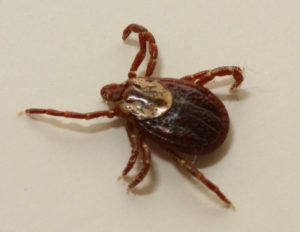 Less than four months in, and 2017 has a clear leading contender for best OSU research press release headline of the year: “Monkey Business Produces Rare Preserved Blood in Amber Fossils.” This is already a guaranteed eye-catcher, but then to lead out of the gate with, “Two monkeys grooming each other about 20-30 million years ago may have helped produce a remarkable new find” – well… all I have to say is my thanks goes out to OSU’s science writer and news editor David Stauth. Reading that story brightened up my whole morning. Based on all the other positive press this story’s already received, it looks like lots of other people might say the same.
Less than four months in, and 2017 has a clear leading contender for best OSU research press release headline of the year: “Monkey Business Produces Rare Preserved Blood in Amber Fossils.” This is already a guaranteed eye-catcher, but then to lead out of the gate with, “Two monkeys grooming each other about 20-30 million years ago may have helped produce a remarkable new find” – well… all I have to say is my thanks goes out to OSU’s science writer and news editor David Stauth. Reading that story brightened up my whole morning. Based on all the other positive press this story’s already received, it looks like lots of other people might say the same.
Two little tears in the fossilized remains of a plump and freshly plucked tick excreted perfectly preserved evidence of the parasite Babesia microti, along with some of the mammalian red blood cells it infected. Babesia microti is a malaria-like red blood cell parasite than can cause the disease known as babesiosis in humans.
“The life forms we find in amber can reveal so much about the history and evolution of diseases we still struggle with today,” said study author George Poinar, Jr., OSU College of Science professor emeritus. Poinar is recognized as an international expert on many kinds of life preserved in amber. “This parasite, for instance, was clearly around millions of years before humans, and appears to have evolved alongside primates, among other hosts.”
Holes punctured into the tick indicate that something likely came along and plucked the bulbous bloodsucker from its mammalian host and somehow ended up plunking the tick into some sticky tree sap.
“This would be consistent with the grooming behavior of monkeys that we know lived at that time in this region,” Poinar said. “The fossilized blood cells, infected with these parasites, are simply amazing in their detail. This discovery provides the only known fossils of Babesia-type pathogens.”
Detailed photographs of the fossilized remains of both the tick and red blood cells are available online at http://oregonstate.edu/ua/ncs/
By Matthew Hunt
